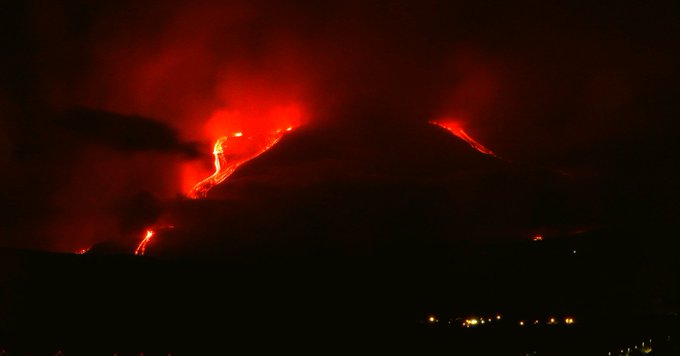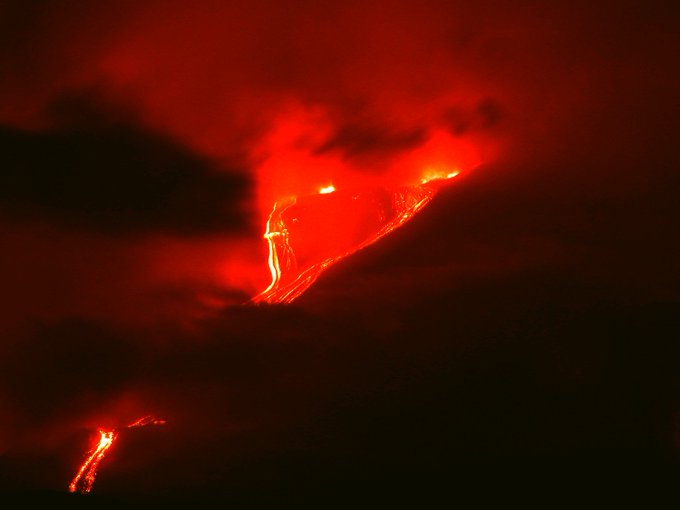Mount Etna, one of the best-known active volcanoes in Europe, began a phase of eruptions this week. The eruptions took place high up on Mount Etna’s summit and don’t pose any threat to nearby people or towns. But the eruptions, which send lava and ash out of newly formed cracks in the volcano, make for a truly spectacular sight. Here are some of the images from this week’s eruptions:
Mount Etna Is Located in Sicily & Has Been Called One of the Safest Volcanoes in the World
As volcanoes go, Mount Etna is fairly safe. In fact, it’s been called one of the safest volcanoes in the world. Its eruptions sometimes cause damages to buildings, but for the most part the volcano, located in eastern Sicily, is not dangerous for people. It’s estimated that throughout the course of Etna’s history, it’s caused only 77 deaths.
That’s why there are towns near its base, and that’s also why it continues to be a reliable draw for tourists. After the latest round of eruptions began this week, the nearby airport, Catania Airport, was still open, with flights taking off and arriving. Tourists were also allowed to climb Mount Etna after the eruptions began, although they were told not to hike all the way to the peak, where the eruptions are taking place.
The Latest Phase of Eruptions Began on May 29 & Followed an Increase in Seismic Activity
Boris Behncke is a researcher with Italy’s National Institute of Geophysics and Volcanology. He first documented Etna’s latest phase of eruptions on May 29. Behncke wrote about the event, but he also took to Twitter to post his dramatic photos of the volcanic activity. Behncke wrote that the eruption began with a dense column of ash that came pouring out of the volcano on May 29. By the next day, the ash had begun to dissipate, he said. The ash was followed by what’s known as a “Strombolian” eruption. That’s a relatively mild eruption, generally consisting of a series of short bursts of lava that are blasted out of fissures in the volcano. The lava can shoot up into the air anywhere from 10 to 100 meters.
Behncke wrote that two new fissures, or cracks, had opened up in Etna, and lava was flowing out of both of the new fissures. One of the cracks is in the north-east sectors of the New Southeast Crater; the other is in the south-east side of the same crater. (It’s known as the Nuovo Cratere di Sud Est in Italian). The latest phase of eruptions likely took place because of an increase in seismic activity over the past week which opened up the fissures.
On June 1, Behncke noted that clouds had covered the sky above the volcano, making it difficult to see the eruptions — at least for a while.





